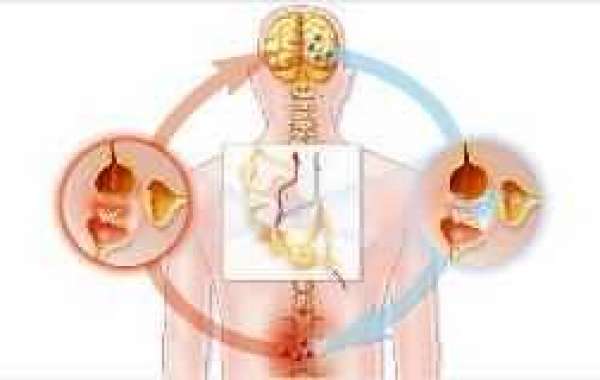
What is neuropathic pain? How to treat neuropathic pain?
Neuropathic pain is a result of a damaged or dysfunctional nervous system. The pain can be felt from different levels of the nervous system incluincludingspinal the cord, the brain, and the peripheral nerves. The brain and the spinal cord are collectively known as the Central Nervous System. Meanwhile, peripheral nerves flow through the rest of our body to organs, arms, legs, fingers, and toes.
Nerve damage can change the nerve function and areas in the central nervous system known as central sensitization. The damaged nerve fibers then send the wrong signals to pain centers.
The change in nerves and disturbance in functions is known as Neuropathy consisting in 30 percent of cases of diabetes alone. The source of neuropathic pain is difficult to determine as it can be linked to hundreds of diseases.
Causes of Neuropathic Pain
Sources of neuropathic pain include diabetes, facial nerve problems, central nervous system disorders, HIV/AIDS, shingles, and complex regional pain syndrome. Other causes include amputation (phantom pain), chemotherapy drugs, radiation therapy, spinal nerve inflammation/compression, nerve compression by tumors, and trauma or surgery leading to nerve damage.
Symptoms of Neuropathic Pain
Symptoms of neuropathic pain can be diverse and generally unbearable. The symptoms include:
Spontaneous pain: This is a pain that comes without any triggers or stimulation. Patients feel shooting or burning pain that feels like stabbing, and electric shock. It can also give a feeling of “pins and needles, tingling and numbness.
Evoked Pain: This neuropathic pain can be caused by non-painful triggers such as exposure to cold, gentle pressure on a region, brushing against the skin, etc. This condition is known as allodynia. This also means an increase in pain caused by normally painful stimulations.
Sleep disturbances and excessive emotional problems are caused by sleep deprivation and pain.
A less painful experience than the normally painful stimulus.
An abnormal or unpleasant sensation or pain that can either be evoked or spontaneous.
How to Treat Neuropathic Pain?
The primary goal of the treatment is to treat the underlying disease. For instance, if the patient has a tumor pressing on a nerve, then the doctor must administer radiation or surgery to shrink the tumor. Followed by that pain relief medicines like Aspadol (tapentadol), NSAIDs, non-opioid pain killers, and other forms of pain relief medications are also given.
In some cases, doctors need to give multimodal therapy that includes administering medication, physical therapy, psychological counseling, and even surgery if required to treat neuropathic pain. Doctors often start with NSAIDs or OTC painkillers, but some nerve pains are way more severe. If no other pain medications work, doctors may prescribe medications like online Aspadol Australia (a generic version of Tapentadol). It belongs to the opioid family of medications used to treat moderate to severe nerve pain that is untreatable by other medications. Since it is a narcotic, it is strictly prescribed by a licensed doctor.
Sometimes doctors prescribe pain medications along with anti-seizure drugs and antidepressants such as Gabapentin, Pregabalin, Carbamazepine, Amitriptyline, Venlafaxine, Duloxetine, etc. Just because the doctor is prescribing anti-seizure and anti-depressant medicine does not indicate you have the disease. It is given because most chronic pain often worsens the anxiety or depression of an individual.
Now that you know how you should use Aspadol to your advantage, make sure to buy the drug from a reputed online store to rest assured of its efficacy and avoid unwanted side effects in the long term. After you receive the medicine, check for any sign of tampering. If you see so or notice the medicines are of different colors than they should be, do not consume them. Instead, immediately return them without giving any second thoughts.